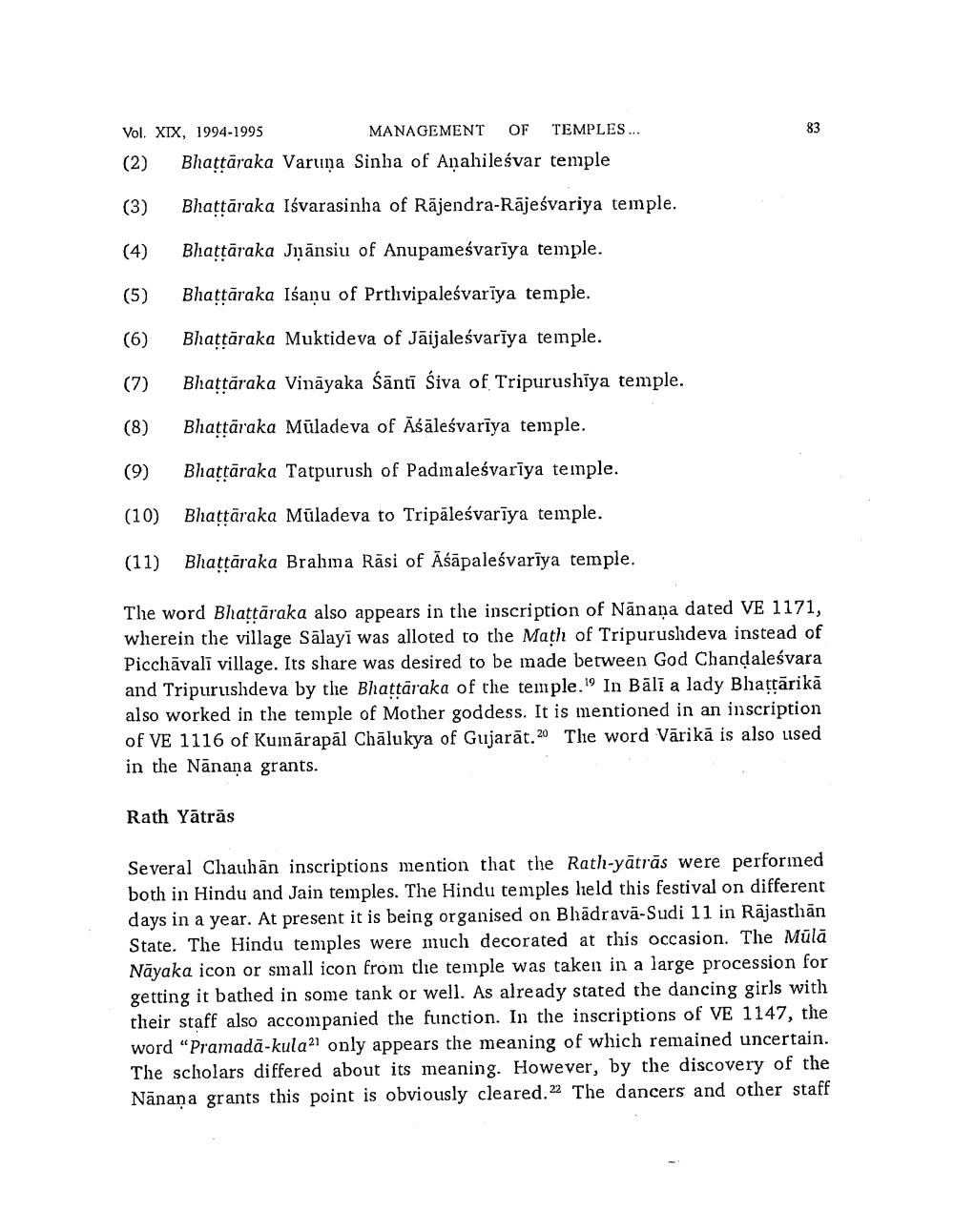________________
Vol. XIX, 1994-1995
MANAGEMENT OF TEMPLES... (2) Bhattāraka Varuņa Sinha of Anahileśvar temple
(3)
Bhattāraka Iśvarasinha of Rajendra-Rājeśvariya temple.
(4)
Bhattāraka Jņānsiu of Anupameśvariya temple.
(5)
Bhattāraka Isaņu of Prtlivipaleśvariya temple.
Bhattaraka Muktideva of Jāijaleśvarīya temple.
(7)
Bhattāraka Vinayaka śānti śiva of Tripurushiya temple.
(8)
Bhattāraka Müladeva of Āśäleśvariya temple.
(9)
Bhattāraka Tatpurush of Padmaleśvariya temple.
(10)
Bhattāraka Müladeva to Tripäleśvarīya temple.
(11)
Bhattāraka Brahma Räsi of Äśāpaleśvariya temple.
The word Bhattāraka also appears in the inscription of Nānaņa dated VE 1171, wherein the village Sālayi was alloted to the Math of Tripurushdeva instead of Picchāvalī village. Its share was desired to be made between God Chandaleśvara and Tripurushdeva by the Bhattāraka of the temple.!' In Bāli a lady Bhattārikā also worked in the temple of Mother goddess. It is mentioned in an inscription of VE 1116 of Kumărapăl Chālukya of Gujarāt.20 Tlie word Värikā is also used in the Nanana grants.
Rath Yātrās
were perfor
Peing organised Ples lield this
du temples
Several Chauhan inscriptions mention that the Rath-yātrās were perforined both in Hindu and Jain temples. The Hindu temples lield this festival on different days in a year. At present it is being organised on Bhadrava-Sudi 11 in Rājasthan State. The Hindu temples were much decorated at this occasion. The Mülā Nāyaka icon or small icon from the temple was taken in a large procession for getting it bathed in some tank or well. As already stated the dancing girls with their staff also accompanied the function. In the inscriptions of VE 1147, the word “Pramada-kula27 only appears the meaning of which remained uncertain. The scholars differed about its meaning. However, by the discovery of the Nānaņa grants this point is obviously cleared.22 The dancers and other staff




